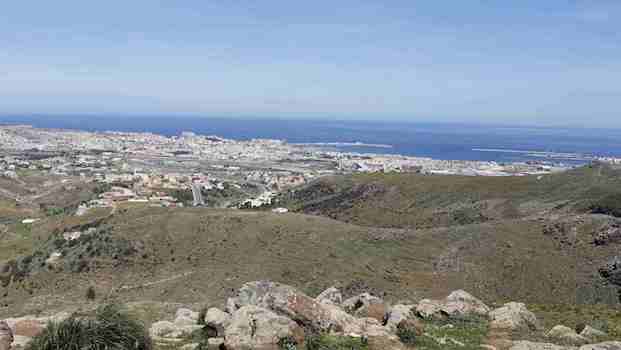London, Asharq Al-Awsat— Moroccan novelist Abdelrahim Lahbibi’s name was not very familiar to Arab readers before his third novel, The Journeys of ’Abdi, Known as the Son of Hamriya, made it onto this year’s shortlist for the much-vaunted International Prize for Arabic Fiction (IPAF). Neither of Lahbibi’s first two novels—Bread, Hashish and Fish (2008), which realistically documents the historical and geographical milestones of Safi, the author’s hometown, and The Best of Luck (2010)—brought the 64-year-old novelist and Arabic language and literature teacher into the spotlight.
Employing a familiar narrative technique, Journeys tells the story of a researcher stumbling upon a manuscript in one of Safi’s old markets that recounts the journey of ’Abdi, a 19th-century Moroccan traveller who embarks on an odyssey from Morocco to Hijaz, in present-day Saudi Arabia. The false document technique Lahbibi uses creates a meta-fictional narrative, blurring the boundaries between fiction and reality.
Asharq Al-Awsat spoke with Lahbibi about his relationship with Safi, the narrative style of his third novel, and the impact being nominated for the IPAF will have on his career.
Asharq Al-Awsat: What does it mean to you that your third novel, The Journeys of ‘Abdi, Known as Son of Hamriya, has made it onto this year’s shortlist for the International Prize for Arabic Fiction?
Abdelrahim Lahbibi: Taking part in the IPAF is a special episode in the life of any novelist and constitutes a turning point towards the better for all entrants.
Q: Fiction from the Maghreb has been enjoying a great reception and readership in the Arab world, with many novelists, such as Waciny Laredj, Samir Kacimi and Mohammed Achaari, among others, establishing their reputations on the Arab literary scene. Do you have any comment on this, especially in light of the fact two Moroccan novelists have made it onto the IPAF shortlist this year?
Maghrebi fiction today is in a better position [and] maintaining a higher level of performance thanks to the rich literary works being produced, in terms of both content and form. It constitutes, along with the fiction of the Mashreq, a varied and creative fictional space.
Q: Journeys uses the well-known “false document” narrative technique—in this case, a manuscript that recounts the journey of ’Abdi from Morocco to Hijaz in the 19th century. This technique results in a parallel setting (a historical moment in time and geographic location) as well as a pluralistic narrative discourse with different characters and themes. Could you tell us about this technique and the difference such a narrative game makes?
This narrative game, the manuscript, constitutes the focal point of all the levels of the novel—narrative, language, description, characters, themes, and so on—bringing about a complete unity, a logical and organic sequence of events and a smooth and intriguing style, with the novel turning into a well-connected sequence of episodes. Even the denouement turns into a window open to interpretation and reflection about the potential fate of ’Abdi—it is a door to the unknown, or a reflection about another novel.
Q: In his search for knowledge across the Arab world, ’Abdi resuscitates some Arab historical figures, such as Ibn Khaldun, the 15th-century Arab Muslim historiographer and historian. Did you do much historical research while writing the novel? To what extent does the question of achieving a balance between the historical and the fictional preoccupy you?
Writing and editing a manuscript both historically and linguistically that belongs to the 19th century, taking the journey as its temporal and spatial trajectory, necessarily entails using references and sources. However, fictional editing is different from other editing in the sense that it turns the margins into another text, a meta-text, that merges with and complements the other while at the same time representing two different discourses narrated by different voices. The encounter between the fictional and the historical raises reality to the level of fiction, and at the same time gives the illusion that fiction has turned into reality.
Q: Dealing with the present through the past and the exploration of the depths of history is a common narrative method in Arabic and foreign fiction. What do you think of this kind of literary treatment? Do you think the Arab historical novel genre has matured?
Journeys is not a historical novel. Its characters are fictional, and so are most of its events. What is realistic in the novel are the narrative tools that delude readers into believing that what they are reading is true and historically factual.
Q: In your previous novels, Bread, Hashish and Fish andThe Best of Luck, Safi—your hometown in Morocco—dominates the narrative space and the characters. In your recent novel, the narrator stumbles upon the manuscript that sets the novel into action in one of Safi’s markets. To what extent has Safi inspired your work? Will you possibly transcend Safi and write about other places?
For me, the novel is the city. Each novelist has their own favorite city. The novel, in this sense, is the place that embraces us and shapes our emotional, social and psychological identities. We write about the city, whether in a positive or a negative way, out of love or hatred. We write about the city even when we are in the wilderness.
As for transcending Safi and moving on to other places and writing about them—that is contingent on the narrative necessities. However, the favorite place or city remains the essential core, dormant behind the words and lines.
In Bread, Hashish and Fish, Essaouira constituted a special place for a good deal of the novel. In The Best of Luck, Jeannette’s letters make reference to several places in France. As for Journeys, many places are described during the journey.
Q: How long did it take you to write Journeys?
It took almost four years.
This is an abridged version of an interview originally conducted in Arabic.


Trackbacks/Pingbacks